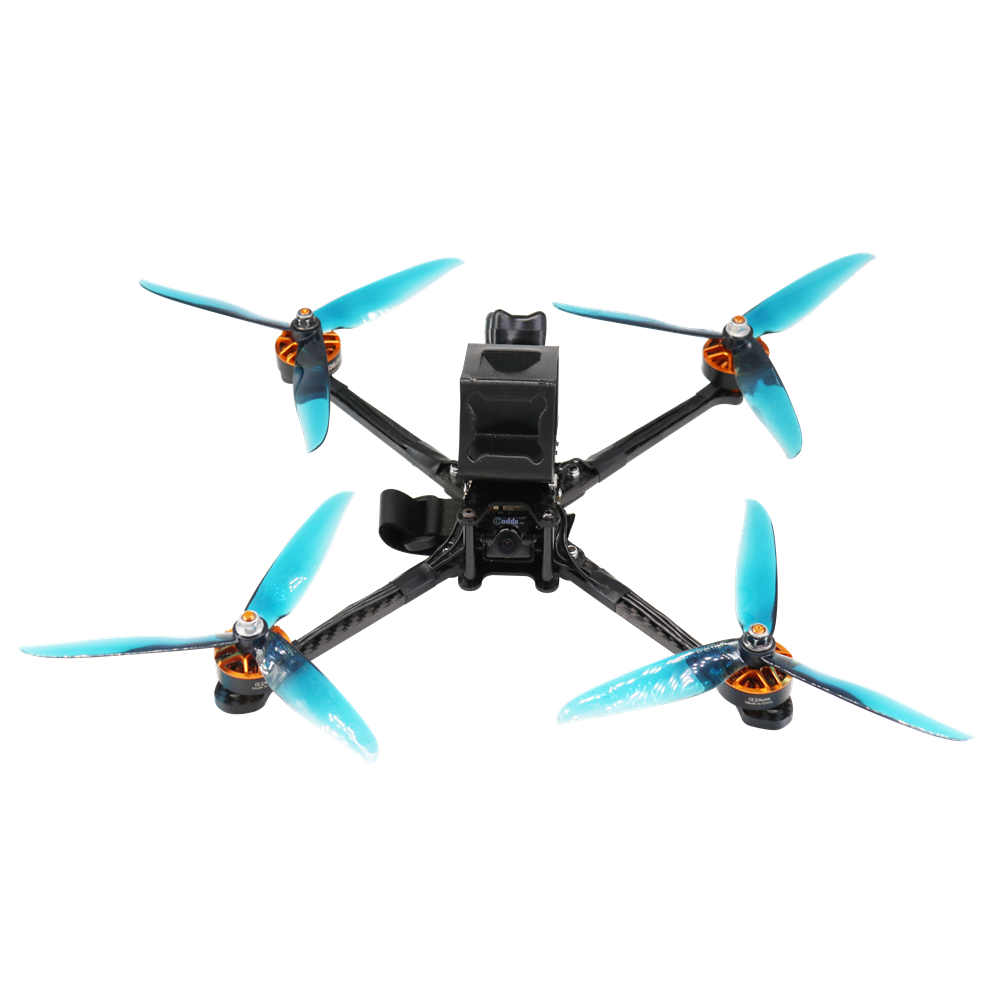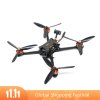I am very new to multirotordrones and I decide to learn how to build one myself. Technically I am thinking to build two drones, one 7” quadcopter and one 10” quadcopter.
So far I only did research on FC, ESC, Motor, battery and prop size, I haven’t dug into other parts, such as receiver, GPS, or analog cam, yet. For now, I just want to make sure I am heading to the right direction and getting the right parts for the drone I am going to build.
First, for the 7’’ quadcopter. I am aiming for a long range, high efficiency cinematic FPV.
FC: F7 I saw many demo videos and budget build videos on YouTube, and I decide to go with a F7 stack flight controller for this model. It is an easier start for me and less wiring and soldering I need to do. I haven’t decide on any brand yet (There are so many brands like holybro kakute, iFlight, etc.) I can choose from and there are review videos, so I am not so concerned about the brand, and I know F7 will give me some headroom for future firmware update.
ESC: come with the FC stack
Motor:1300KV-1700KV I know the efficiency is decided by the combination motor(amp draw), prop size, battery (size and voltage) and the weight of the quad. I won’t do a lot of freestyle or racing, because I am just not that skilled, so is this right KV range for a 7” quad?
Propeller:7x4.2 2-blade I want to use a 2-blade on the 7” instead of 3-blade. What is difference between a 2 blades and a 3 blades on quadcopter. I see 3 blades on 7” quad very often, but I don’t understand why.
Battery:6S li-ion Li-ion battery can increase the flight time comparing to li-po battery, right?
That’s what I have decided for the 7” quadcopter so far, if there is something doesn’t look right, please let me know. I am not ask anyone to do the work for me, I just want to know if everything above sounds like a good start, and from there I can narrow the selection down.
For the second quadcopter I want to build, I have a lot uncertainties.
This 10” quad will be used for aerial filming, and I want to be able to stay in the air for about an hour (when it is not carrying any heavy equipment). With a low KV motor(900KV-1100KV), a 1045 propeller, and a 12S battery pack should be able to achieve this, right? Then, because the voltage is too high for most of the F7 FC, I think it is best to follow the same build-up of a X-class/Beast quad, right?
This is a general idea I have for this 10” quad. Does it sound practical? If it sounds alright, then I can choose the parts for this drone based on the X-class build up I see on YouTube. Unless some changes can be made here, or what I am think here is no right and I need a different design.
I very appreciate all the help, any comment, any suggestion, a video or a picture of similar build up will be helpful to me. I am new to FPV drone, the more feedback I get, the more I learn.
Thank you
So far I only did research on FC, ESC, Motor, battery and prop size, I haven’t dug into other parts, such as receiver, GPS, or analog cam, yet. For now, I just want to make sure I am heading to the right direction and getting the right parts for the drone I am going to build.
First, for the 7’’ quadcopter. I am aiming for a long range, high efficiency cinematic FPV.
FC: F7 I saw many demo videos and budget build videos on YouTube, and I decide to go with a F7 stack flight controller for this model. It is an easier start for me and less wiring and soldering I need to do. I haven’t decide on any brand yet (There are so many brands like holybro kakute, iFlight, etc.) I can choose from and there are review videos, so I am not so concerned about the brand, and I know F7 will give me some headroom for future firmware update.
ESC: come with the FC stack
Motor:1300KV-1700KV I know the efficiency is decided by the combination motor(amp draw), prop size, battery (size and voltage) and the weight of the quad. I won’t do a lot of freestyle or racing, because I am just not that skilled, so is this right KV range for a 7” quad?
Propeller:7x4.2 2-blade I want to use a 2-blade on the 7” instead of 3-blade. What is difference between a 2 blades and a 3 blades on quadcopter. I see 3 blades on 7” quad very often, but I don’t understand why.
Battery:6S li-ion Li-ion battery can increase the flight time comparing to li-po battery, right?
That’s what I have decided for the 7” quadcopter so far, if there is something doesn’t look right, please let me know. I am not ask anyone to do the work for me, I just want to know if everything above sounds like a good start, and from there I can narrow the selection down.
For the second quadcopter I want to build, I have a lot uncertainties.
This 10” quad will be used for aerial filming, and I want to be able to stay in the air for about an hour (when it is not carrying any heavy equipment). With a low KV motor(900KV-1100KV), a 1045 propeller, and a 12S battery pack should be able to achieve this, right? Then, because the voltage is too high for most of the F7 FC, I think it is best to follow the same build-up of a X-class/Beast quad, right?
This is a general idea I have for this 10” quad. Does it sound practical? If it sounds alright, then I can choose the parts for this drone based on the X-class build up I see on YouTube. Unless some changes can be made here, or what I am think here is no right and I need a different design.
I very appreciate all the help, any comment, any suggestion, a video or a picture of similar build up will be helpful to me. I am new to FPV drone, the more feedback I get, the more I learn.
Thank you



